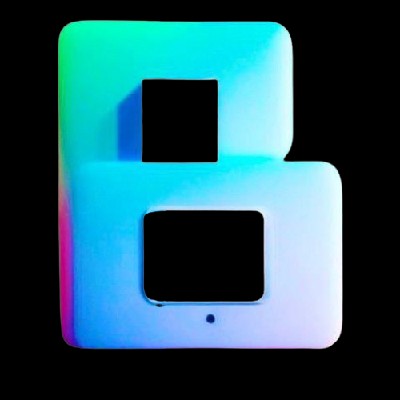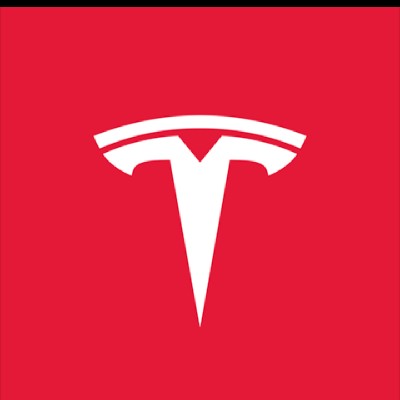
Roam priceROAM
ROAM/USD price calculator
Roam market Info
Live Roam price today in USD
The cryptocurrency market on December 6, 2025, is characterized by significant price fluctuations, evolving regulatory landscapes, and targeted developments within specific altcoin projects. While Bitcoin (BTC) experiences a notable downturn, Ethereum (ETH) navigates its post-upgrade phase, and various altcoins are seeing momentum from technical advancements and institutional interest.
Market Performance and Key Cryptocurrencies
Bitcoin (BTC) has been under considerable pressure, with its price failing to sustain levels above $90,000 and even dipping below $85,000 on December 1st. This downturn follows an all-time high of nearly $125,000 reached on October 6, 2025, marking a significant correction over the past two months. The CoinDesk Bitcoin Price Index recorded a 3.45% drop to $89,340.76 on December 5th, reflecting a challenging start to the month, with the cryptocurrency down 4.36% year-to-date. This performance sees Bitcoin lagging behind the S&P 500 for the first time in over a decade, as investor attention shifts towards artificial intelligence stocks and precious metals. The broader crypto market saw an $80 billion reduction in market capitalization and $500 million in liquidations within hours, indicating a defensive sentiment among traders.
Ethereum (ETH) is currently trading around $3,100-$3,185, navigating the aftermath of its 'Fusaka' upgrade, which went live on December 3rd. This upgrade aims to significantly reduce Layer 2 fees and enhance network capacity, prompting a 4.3% price increase on the day of activation, pushing ETH briefly to $3,200. Despite this, Ethereum also experienced a 3.36% decline to $3,018.88 on December 5th, bringing its year-to-date performance down by 9.74%. Analysts, however, remain cautiously optimistic, with predictions suggesting ETH could reach $3,850-$3,900 by December 7th and potentially $3,980 by the end of the month, driven by ecosystem upgrades and improving sentiment.
Several altcoins are capturing attention due to specific developments. THORChain (RUNE) is anticipating a potential price surge this weekend, fueled by its upcoming V3.14.0 upgrade, which promises performance improvements and fixes. Aerodrome Finance (AERO) is also showing signs of recovery following a domain restoration announcement. XRP, currently trading around $2.16, faces divergent forecasts, with some predicting a dramatic rise to $15 by December's end, spurred by recent spot XRP ETF approvals, while others foresee a potential drop below $1. The general consensus points to altcoin strength as a key indicator for a broader market bull run, with narratives around stablecoin inflows and AI integration driving interest in projects like SUI and BitTensor (TAO).
Regulatory Landscape Evolves Globally
Regulatory clarity continues to be a major theme shaping the crypto market. In the United Kingdom, the Property (Digital Assets etc) Act 2025 received Royal Assent on December 2nd, formally recognizing crypto assets and stablecoins as property. This landmark legislation grants digital asset owners enforceable property rights and legal avenues for redress in cases of misuse or theft.
In the United States, the Commodity Futures Trading Commission (CFTC) announced that spot cryptocurrency products will begin trading on CFTC-registered futures exchanges, a move designed to enhance access to regulated trading venues for digital assets. This development is expected to pave the way for increased institutional participation in the crypto market. Meanwhile, the SEC's Crypto Task Force is scheduled to host a roundtable on financial surveillance and privacy on December 15th. On a regional level, the Connecticut Department of Consumer Protection issued cease-and-desist orders to Robinhood, Kalshi, and Crypto.com over allegations of operating unlicensed online gambling platforms related to sports prediction contracts.
Canada's crypto regulatory framework remained stable throughout 2025, but saw a tightening around stablecoins, with new rules requiring fiat-backed, fully reserved, and custodized stablecoins to be in full effect after December 31, 2024. Austria is also grappling with new regulations, as only four out of thirteen existing Crypto Asset Service Providers (CASPs) have secured MiCA authorization ahead of the December 31, 2025 deadline.
Upcoming Events and Market Outlook
Several key industry events are underway or fast approaching, including the W3N 2025 festival in Narva, Estonia (December 4-5), and the International Conference on Blockchain Technology and Information Security in Haikou, China (December 5-7). Looking ahead, the Bitcoin MENA 2025 conference in Abu Dhabi (December 8-9) and the Global Blockchain Show in Abu Dhabi (December 10-11) are anticipated to gather global leaders and enthusiasts.
Overall, December 2025 is poised to be a month of significant volatility and potential turning points for the crypto market. Expectations of interest rate adjustments by the US Federal Reserve, coupled with increased market access for certain altcoins, are predicted to make this a defining period for investors. Despite the current turbulent market conditions, experts maintain that cryptocurrencies, as a fundamental technology, are here to stay.
Do you think the price of Roam will rise or fall today?
Now that you know the price of Roam today, here's what else you can explore:
How to buy Roam (ROAM)?How to sell Roam (ROAM)?What is Roam (ROAM)What would have happened if you had bought Roam (ROAM)?What is the Roam (ROAM) price prediction for this year, 2030, and 2050?Where can I download Roam (ROAM) historical price data?What are the prices of similar cryptocurrencies today?Want to get cryptocurrencies instantly?
Buy cryptocurrencies directly with a credit card.Trade various cryptocurrencies on the spot platform for arbitrage.Roam price prediction
When is a good time to buy ROAM? Should I buy or sell ROAM now?
What will the price of ROAM be in 2026?
In 2026, based on a +5% annual growth rate forecast, the price of Roam(ROAM) is expected to reach $0.07489; based on the predicted price for this year, the cumulative return on investment of investing and holding Roam until the end of 2026 will reach +5%. For more details, check out the Roam price predictions for 2025, 2026, 2030-2050.What will the price of ROAM be in 2030?
About Roam (ROAM)
What Is Roam?
Roam, previously known as MetaBlox, is the largest decentralized Wi-Fi network. Founded in 2021, it is designed to provide secure, seamless, and global internet access. By connecting millions of Wi-Fi hotspots worldwide, Roam allows users to move between these networks without needing to log in repeatedly or share passwords. The platform leverages blockchain technology to ensure both security and privacy for its users. Roam’s decentralized nature empowers users and Wi-Fi providers to manage the network, creating a system that is more user-controlled and resilient than traditional networks.
Roam addresses several challenges commonly faced by users of public Wi-Fi. One major issue is the frequent need for logins and the sharing of passwords when connecting to different Wi-Fi networks. Roam eliminates these barriers by using technologies like OpenRoaming and Passpoint, which automatically authenticate users when they connect to a supported hotspot. This creates a more seamless experience for users, whether they are traveling or simply moving between different locations.
Additionally, Roam solves problems related to Wi-Fi security and privacy. Public networks often expose users to security risks, such as data theft or unauthorized access. Roam uses blockchain-based DIDs (Decentralized Identifiers) and VCs (Verifiable Credentials) for secure authentication, ensuring that sensitive data remains protected. By combining decentralized infrastructure with blockchain security, Roam provides a safer and more efficient way for people to access the internet across a variety of public and private hotspots.
How Roam Works
Roam operates by connecting a decentralized network of Wi-Fi hotspots around the world. The system allows users to access Wi-Fi networks seamlessly as they move between locations, without needing to log in or share passwords each time. When a user connects to a Roam-enabled hotspot, they earn Roam Points, which can later be converted into ROAM tokens. This rewards system encourages regular use of the network.
The platform relies on widely-used technologies like OpenRoaming and Passpoint, which automatically authenticate users as they connect to supported hotspots. These technologies make it easier for devices to connect securely without needing to input login details every time. Roam enhances this process by integrating blockchain technology, ensuring that user authentication and data privacy are secure and transparent.
Roam’s decentralized approach means the network is not controlled by a single entity. Instead, users and Wi-Fi providers collaborate to build and maintain the infrastructure. Anyone can contribute by providing Wi-Fi access points, and users can earn rewards for their participation. The system also allows users to stake their ROAM tokens, supporting the network's growth. This decentralized structure offers a more flexible and scalable solution compared to traditional, centralized Wi-Fi networks.
What Is ROAM Token?
The ROAM token is the native utility token of the Roam network. It serves multiple functions within the ecosystem, primarily as a reward for users who contribute to the network, such as connecting to Wi-Fi hotspots or providing access points. ROAM tokens can be earned through activities like checking in daily, using the network, and staking tokens to support the platform's growth.
The total supply of ROAM tokens is capped at 1 billion tokens, which helps control inflation and ensure long-term value. The tokens are distributed across various participants in the ecosystem, including users, validators, and network providers. Users can exchange their Roam Points for ROAM tokens, which can then be held, traded, or used within the platform.
In addition to being a reward mechanism, ROAM tokens play a key role in staking and securing the network. Users can stake their tokens to help validate transactions, support the platform, and earn additional rewards. As the Roam network grows and more people join, the utility and demand for ROAM tokens are expected to increase, potentially influencing the token's value.
Should You Invest in Roam?
Roam presents an innovative approach to global Wi-Fi connectivity, offering a decentralized network that aims to solve issues like security, privacy, and the hassle of constant logins. By leveraging blockchain technology, it promises a more seamless and user-controlled experience compared to traditional Wi-Fi networks. However, the success of Roam will rely on its ability to scale and attract widespread adoption. As with any emerging technology, it’s essential to weigh the potential rewards against the risks before making any decisions.
Bitget Insights



ROAM/USD price calculator
ROAM resources
What can you do with cryptos like Roam (ROAM)?
Deposit easily and withdraw quicklyBuy to grow, sell to profitTrade spot for arbitrageTrade futures for high risk and high returnEarn passive income with stable interest ratesTransfer assets with your Web3 walletWhat is Roam and how does Roam work?
Global Roam prices
Buy more
FAQ
What is the current price of Roam?
What is the 24 hour trading volume of Roam?
What is the all-time high of Roam?
Can I buy Roam on Bitget?
Can I get a steady income from investing in Roam?
Where can I buy Roam with the lowest fee?
Related cryptocurrency prices
Prices of newly listed coins on Bitget
Hot promotions
Where can I buy Roam (ROAM)?
Video section — quick verification, quick trading









